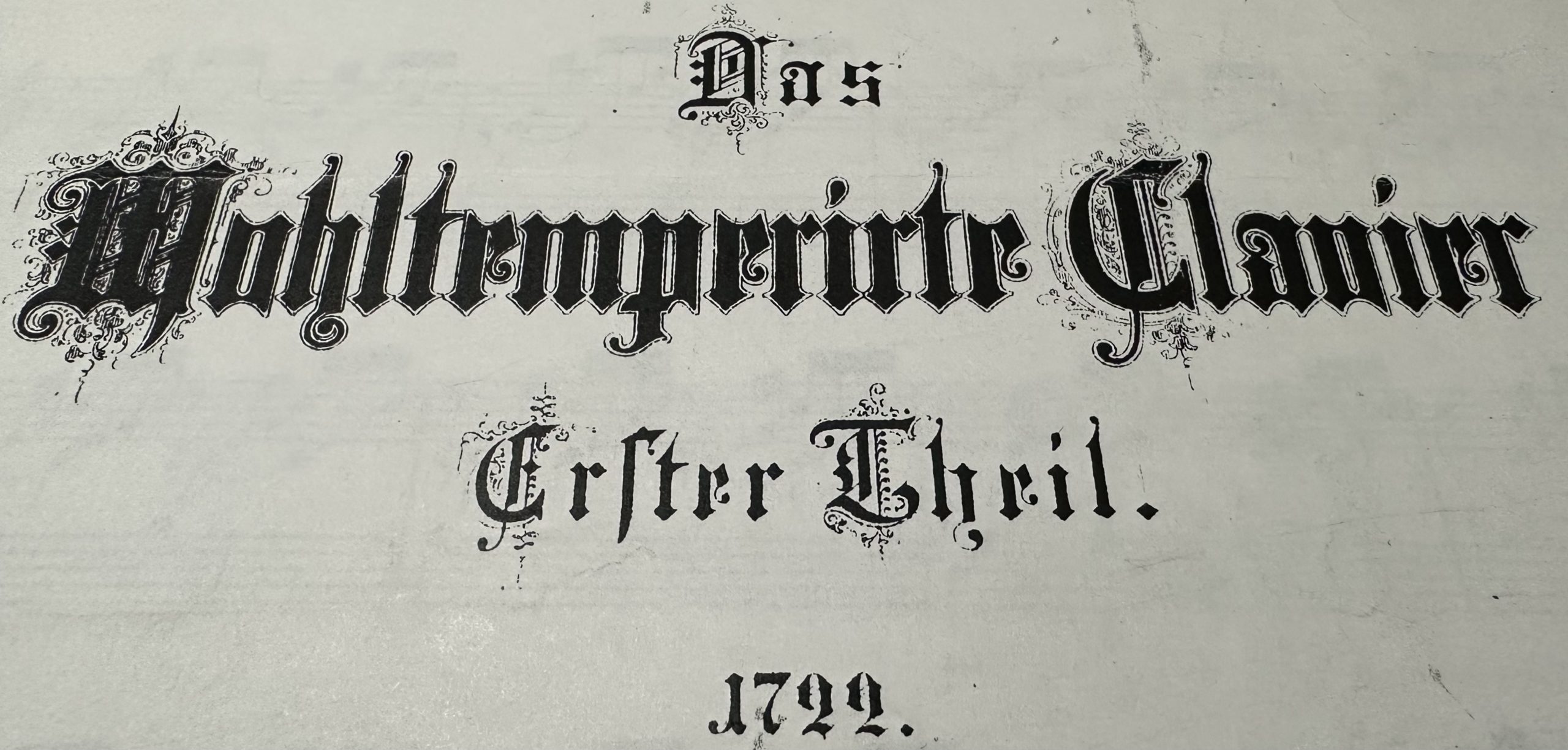This project was conceived some two decades earlier, around 2001, when I committed to producing my own copy of J.S. Bach’s Well-Tempered Clavier, Books One & Two or 48 Preludes & 48 Fugues in 2 Volumes. There were times my peers and even to myself this seemed like a crazy endeavor. But, in the process I realized there were many hidden elements exposing deeper musical understanding.
The following information comes from Dr. Yo Tomita (Professor of Musicology at School of Creative Arts, Queen’s University Belfast, Northern Ireland), with permission. He tells us why the WTC is a great resource regarding the pedagogical aspects of piano education.
The Well-Tempered Clavier is a collection of educational pieces with exceptionally high artistic contents. On the Title Page of Book One, Bach describes the project: Well-Tempered Clavier, Books One & Two or Preludes & Fugues through all the tones and semitones both as regards the tertia major or Ut Re Mi and as concerns the tertia minor or Re Mi Fa for the Use and Profit of the Musical Youth Desirous of Learning as well as for the Pastime of those Already Skilled in this Study drawn up and written by Johann Sebastian Bach. Anno 1722.
This undertaking, to make my own copy, complete with fingerings, of the 48, has become a joyful activity that continues to focus and improve my musical abilities every day. Robert Schumann’s quote that the WTC was the “Pianist’s Daily Bread” is often quoted by music educators today.
From it, pianists can learn a lot about keyboard technique, but all musicians may find playing the Preludes and Fugues helps keep the mind sharp, with its demands on the ear, sight-reading and memorizing.
Though the Well-Tempered Clavier was not published during Bach’s lifetime, but some 51 years after, many manuscript copies were made by his sons and pupils and copies spread steadily all over Europe with his fame.
This work can be seen to be epoch-making, evoking new ideas in the minds of later generations. Influential musicians such as Mozart and Beethoven received manuscripts and as everyone knows, these composers in turn influenced the direction of Western music.
It’s worth taking time to look into the history of this work because it signals the beginning of ‘equal-temperament’. When we follow the trail of the word’s historical significance, we ultimately discover history of tuning methods.
Related to this development was another historical change, namely, the establishment of the tonal system. Since the beginning of the Baroque era, a variety of church modes eventually became reduced to about two, and free modulation became possible. As a result, an increased number of major and minor keys were available for common use. It was not surprising that Bach considered launching such a project using all these theoretically possible keys.
What, then, were Bach’s objectives? Apart from the fact that he wanted to use all the keys, perhaps he intended to compile a collection of pieces covering diverse styles at the highest degree of artistic content and integrity as a whole. Here we can see a trichotomous image of Bach as distinguished composer, performer and educator.
It was reported that H.N Gerber, who studied under Bach from 1724 to 1726, told his son of his experience with Bach.
“At the first lesson he set his inventions before him. When he had studied these through to Bach’s satisfaction, there followed a series of suites, then the WTC. This later work Bach played altogether three times through for him with his unmatchable art, and my father counted these among his happiest hours, when Bach, under the pretext of not feeling in the mood to teach, sat himself at one of his fine instruments and thus turned these hours into minutes.”
Here we can witness his philosophy in education: pieces put in front of the student should be of sufficient variety, richness of style and form that the student is motivated to strongly learn.
For further analysis of the Preludes & Fugues, please see:
Analysis of J.S. Bach’s Wohltemperirtes Clavier Part 1 by Hugo Rieman (1890)
Analysis of J.S. Bach’s Wohltemperirtes Clavier Part 2 by Hugo Riemann (1890)
